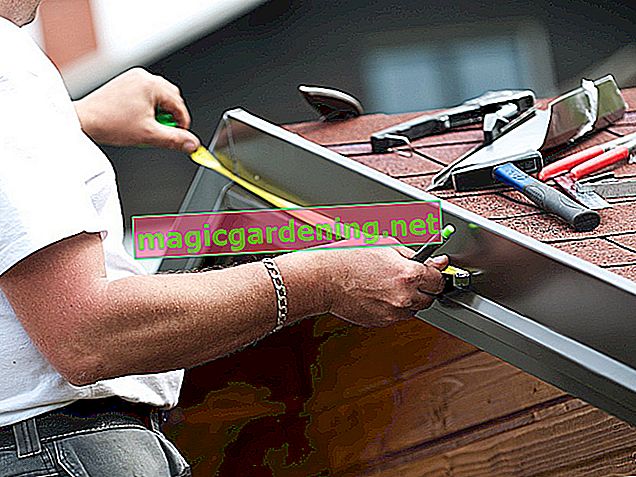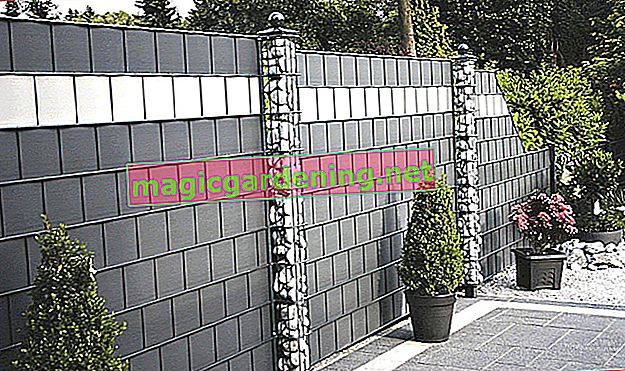
Roofing felt, the simplest variant
Roofing felt is a very inexpensive material. The cardboard soaked in sand, fine gravel or sliver of slate and bitumen is a reliable moisture barrier. However, heat and other climatic influences degrade the roofing felt over the years. Roofing felt also has hardly any insulating properties, so it gets very warm in the summer house (7.70 € on Amazon *) and very cold in winter.
also read
- The garden shed roof is leaking: how to fix it
- Renew the garden shed roof: Here's how
- Making the garden shed weatherproof - this is how you must proceed
Laying roofing felt is very easy:
- Lay the flexible, large-format panels at right angles to the roof pitch, overlapping.
- Attach to the roof boarding with nails or staples.
- If necessary, attach several layers on top of each other for greater stability and durability.
Bitumen shingles: attractive, robust and easy to work with
If you are building a new garden house, it is advisable to use the much more durable bitumen shingles that are most commonly used today for the roofing. These are available in many modern designs and in different shingle shapes such as beaver tail or classic rectangle. This allows you to perfectly match the look of the roof to the surroundings and the garden design.
The material you need
- Foredeck
- Bitumen shingles
- Bitumen shingle adhesive
- Connection plates
- Cap strips
- Nails
This tool should be available:
- Folding rule
- Craft knife
- hammer
Method:
- First of all, awning membrane is laid on wooden panels of the roof parallel to the ridge with an overlap of five centimeters.
- Work very cleanly and use as few nails as possible, this makes it easier to attach the bitumen shingles later.
- If you want to lay eaves strips, now is the right time to attach them to the eaves and the roof gable.
- Bitumen shingles are staggered. For the initial row, the shingles are shortened to the end of the blade incision or in half, depending on the model.
- In the first row you start with a full tongue, in the second row with half a tongue, in the third row you cut off a tongue. This means that the butt joints do not lie on top of each other.
- Drive in nails straight. The heads must be flush with the material so that it is not damaged.
- For roof slopes over 60 degrees, you should also fix the shingles with bitumen glue.
- The edge areas of the roof, regardless of the slope, are sealed with adhesive.
- The ridge is laid with a double covering. The elastic bitumen shingles can be bent over the edge of the roof, the tongue must be up to the blade cut of the previous shingle.
Tips
A simple and quick way to make the roof of the garden house weatherproof is to cover the roof with bitumen corrugated sheets. For this you should first build a wooden slat frame, onto which the corrugated sheets are then nailed.









